Building a retaining wall is an attractive and functional addition to one's landscape. However, you may wonder how long a retaining wall will last. We researched different construction materials for retaining walls and their average lifespan. Learn more about how the right type of retaining wall can offset soil erosion, improve water drainage, and transform your property.
A permanent retaining wall can last between 25 to 100 years, depending on the material, soil, and groundwater. But consider the type of material used to construct a retaining wall and any necessary maintenance needed for the structure's longevity and performance.
We will cover common materials used for erecting durable, attractive retaining walls and their average lifespan, including:
- Stone
- Wood
- Brick
- Concrete
- Gabion
If you still have some questions about the longevity of retaining walls, don't worry. In this guide, we'll discuss the topic in greater detail. Keep reading to learn more about the benefits and drawbacks of retaining walls, depending on whether they are wood, concrete, brick, or natural stone.
![A retaining wall made of wooden sleepers, How Long Do Retaining Walls Last? [Inc. Wood Ones]](https://gardentabs.com/wp-content/uploads/2021/09/How-Long-Do-Retaining-Walls-Last--683x1024.png)
About Retaining Walls
A retaining wall is a smart addition to a property, if you have a deep patio, raised gardens, slopes, or dips. When properly executed, a retaining wall holds back an area of soil that would otherwise collapse or would suffer soil erosion.
Retaining walls are typically a permanent structure, erected using natural stone, wood, brick, or poured concrete. The use of retaining walls is frequent in parks, gardens, and private property for attractive landscaping and planning.
A smaller retaining wall is an exciting DIY project. However, prepare for a considerable investment if you desire a large retaining wall, which is best left to a hired professional. Before executing a retaining wall, consider your choice of construction material, the foundation, support, drainage needs, building codes, zoning, and aesthetic value.
Most retaining walls should last 50 to 100 years when built correctly. Let's take a look at the pros and cons of different materials for building a sturdy, functional retaining wall.
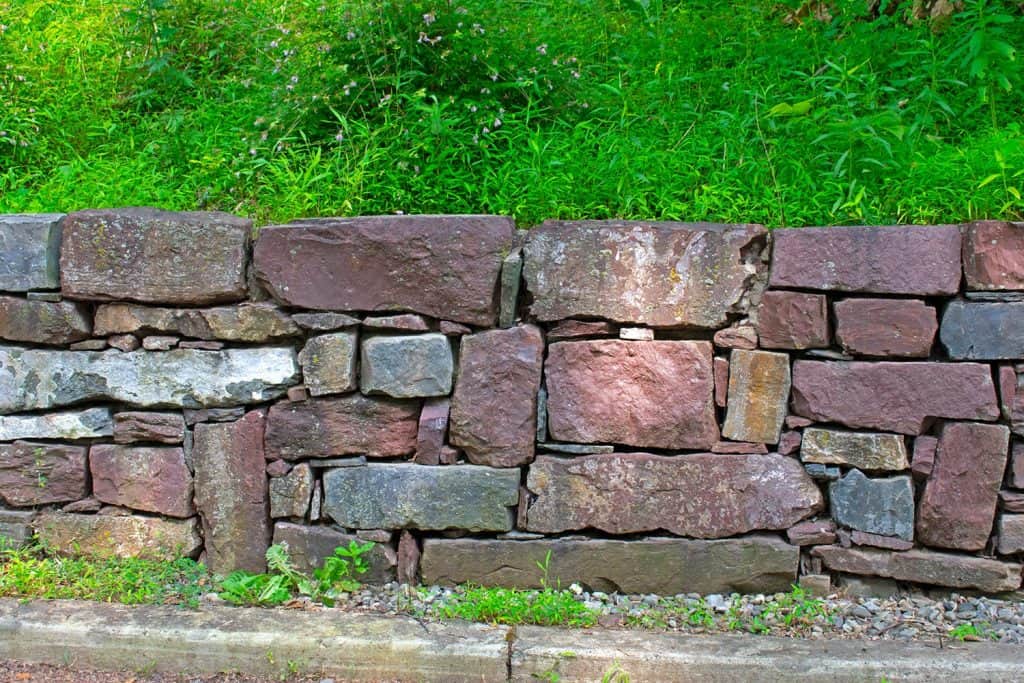
Stone
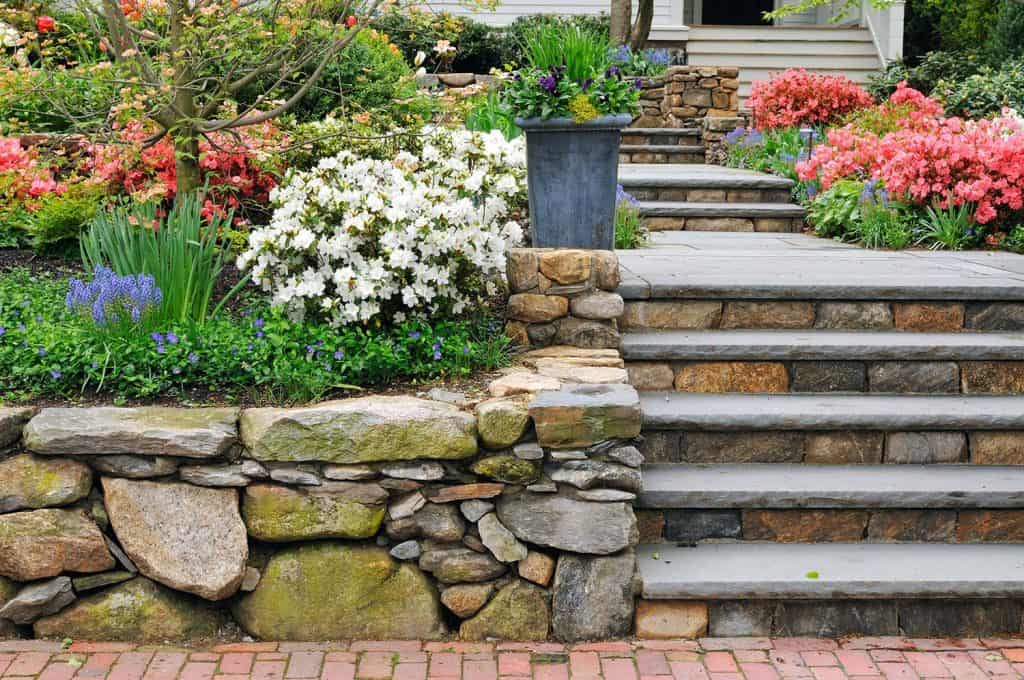
A solid natural or cut stone retaining wall will last between 50 to 100 years. It is easy to erect a stone retaining wall using a dry-stack method, without the need for mortar to hold it together.
Limestone and sandstone are two good options for building a retaining wall. Any stone used should be built atop a foundation of clear or drainage stones, with consideration to reduce water pressure on the wall and promote drainage.
Advantages
- Sturdy, durable option
- Natural stone is very attractive
- Can be put together using a dry-stack method
- No worries about pests or insects infesting
Disadvantages
- Certain stone may be pricey or heavy
- Limited color options
Wood
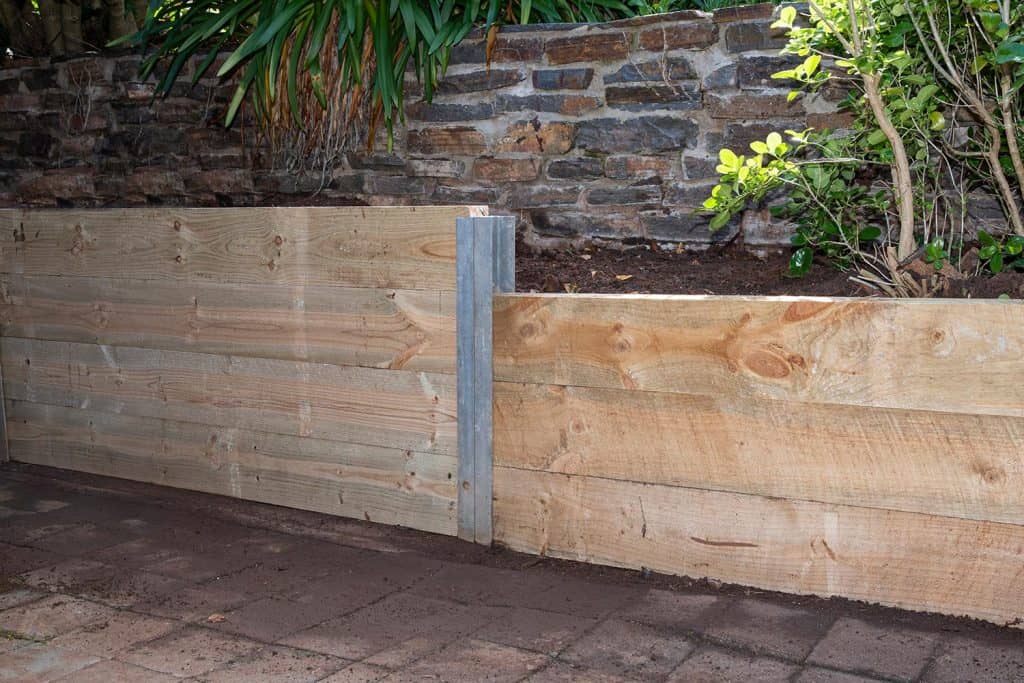
The look and feel of cut or unaltered logs of timber to construct a retaining wall have a unique charm. However, wood retaining walls typically only last between 25 to 40 years before they need replacement.
Wood is an attractive choice for retaining walls because it is inexpensive, readily available, and easy to work with. Additionally, wood is natural and looks beautiful on most landscapes.
However, wood must be coated with a weather-resistant agent that seals out moisture. Proper drainage is a must for wooden retaining walls, and owners should look out for insects that could bore holes or cause structural damage.
Advantages
- Inexpensive material
- Natural look
- Easy to install it yourself
Disadvantages
- Lasts between 25 to 40 years
- Must be treated with sealant for resistance against the elements and treated for insects
Brick
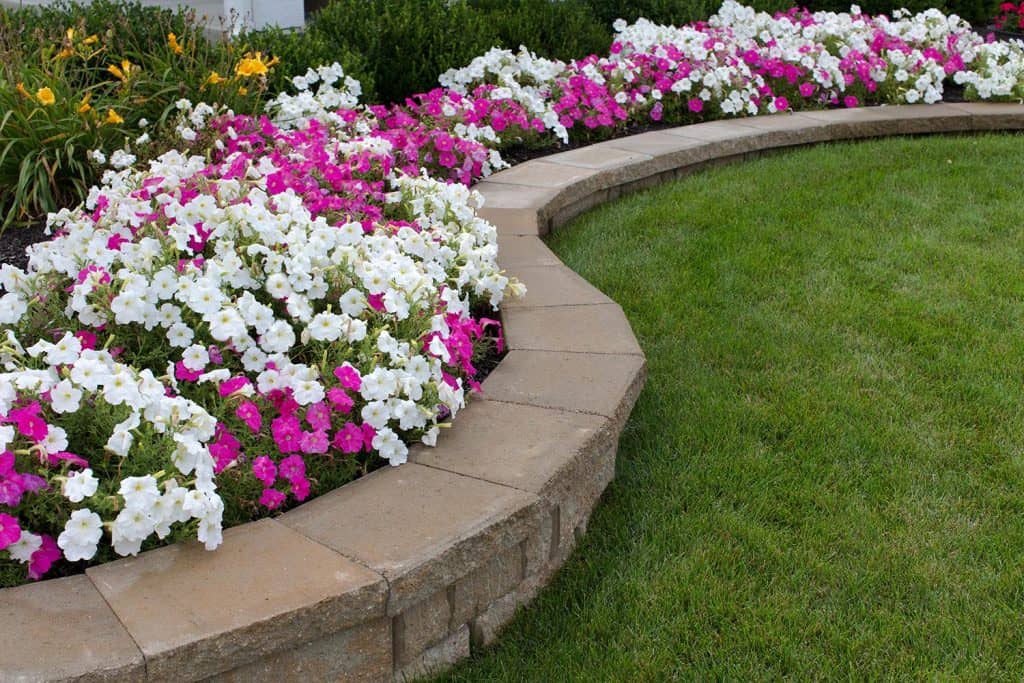
Brick is a classic choice for creating a stylish, long-lasting retaining wall. You can use an interlocking method to erect a desirable retaining wall without relying on mortar.
Many people love brick because it looks good, can weather the elements, and is easy to install. However, it may be challenging having to replace a cracked or damaged brick in a retaining wall. Brick retaining walls last a minimum of 100 years.
Advantages
- Attractive option that complements many landscapes and properties
- Easy to install
- Tough when facing the elements
Disadvantages
- Not many options with brick in terms of color and style
Concrete
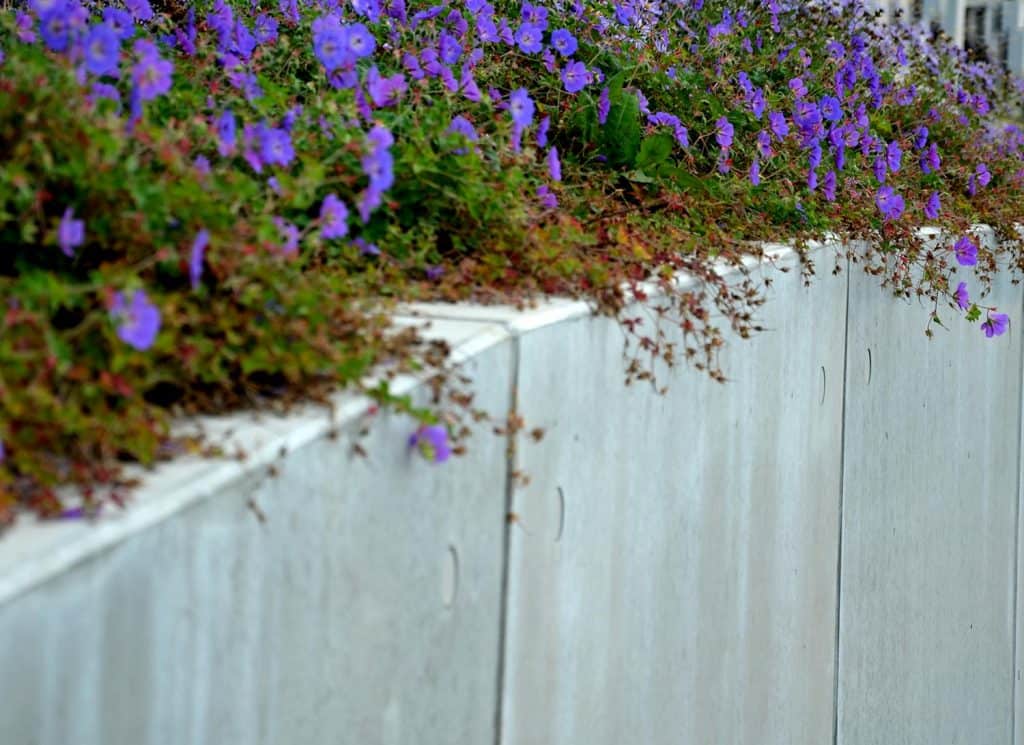
Concrete is a versatile building material for retaining walls because it can be poured into the foundation, constructed using pre-fab concrete blocks, or concrete panels. Concrete retaining walls can last up to a century or longer because of its inherent strength, which builds over time as it cures.
Retaining walls made of concrete are low-maintenance and can be patched with mortar if cracks or wear-and-tear are present.
Advantages
- Versatile design options
- Mid-range cost
- High durability, weather-resistant, non-toxic, and attractive
Disadvantages
- Concrete retaining walls require planning for drainage and placement
- Not easy to remove or change after installation
- Most expensive option if poured concrete
Gabion

A gabion retaining wall definitely has an inimitable look, consisting of wires filed with an assortment of loose rocks. The lock of a gabion wall is not for everyone and an acquired taste. However, a gabion wall has a strong base, reduces erosion, and is low-maintenance.
Advantages
- Easy to install
- Lasts 50 to 100 years
- Gaps filled in with soil and vegetation help strengthen the wall
Disadvantages
- Some find this style is unattractive and disorganized
- Fairly expensive compared to other options
When Should You Replace A Retaining Wall?
All construction materials do not come with a lifespan of nearly 100 years. Check your retaining wall for flooding, cracks, buckling, or loose mortar. In some instances, certain areas of a wall can be patched or corrected. But, a wall that is bowed, leaning forward, or has areas that are visibly degraded call for a replacement.
Do Retaining Walls Require Maintenance?
Routinely check up on retaining walls and provide any maintenance as needed for optimal performance and longevity. Look for loose or cracked mortar, loose stones, weeds that could penetrate the wall or shift areas of the wall, and signs of erosion.
A retaining wall needs to have adequate ground cover for absorption of water, so if any is missing replace it. Also, look for areas where the wall has shifted, bulging, or if there are any areas that need refilling and fortifying. At the very least, conduct an annual inspection to find problems.
How Do You Strengthen A Retaining Wall?
It is essential to check up on your retaining wall to see if there are areas that need attention and strengthening. The point of a retaining wall that is best strengthened is the base where it meets the ground. Find ways to expand the base and thicken it for increased durability or add anchors.
Are Retaining Walls Expensive?
Retaining walls are usually modest, but depending on the construction material and size, can become an expensive investment. Consider the following for each type of construction material:
- Wood - most inexpensive option, with a cost of $16 to $28 per square foot
- Stone - moderate cost, with a price point of $27 to $35 per square foot
- Brick or concrete blocks - $20 to $30 for every square foot
- Poured concrete - $30 to $40 for every square foot
According to Home Advisor, homeowners spend between $3,197 to $8,700 for a retaining wall, with the average price being $5,622. Expect higher costs for retaining walls made of poured concrete, brick, or stone, compared to wood. Retaining walls that are very large and high are more expensive and require professional contractors, versus a smaller DIY-friendly project.
Do You Need Drainage Behind A Retaining Wall?
Because a retaining wall is built to be impervious and not allow water to pass through, ensuring proper drainage is critical to its longevity. If steps are not taken during construction to account for drainage, water pressure can build up, leading to cracks, bulging, or other structural damage.
To encourage draining, the backfill should be at least one foot behind the wall and have ample gravel. A pipe that is perforated should be installed at the inside of the wall or at the bottom where it is backfilled. If needed, weep holes should be part of the design to allow for water to pass through.
In Closing
We hope you have learned a sufficient amount about retaining walls, how to best maintain them, and their benefits. Be mindful about how the construction material for a retaining wall will impact its performance and lifespan. Wooden retaining walls last the shortest amount of time, ranging between 25 to 40 years. Retaining walls made from stone, brick, concrete blocks, or poured concrete last the longest, with a projected lifespan of 50 to 100 years.
Choose the best material for your retaining wall based on your aesthetics, personal needs, and budget. If you don't feel comfortable building a retaining wall, hire a professional contractor and adhere to local building codes and laws.
Before you leave, don't forget to check out the following helpful articles:
